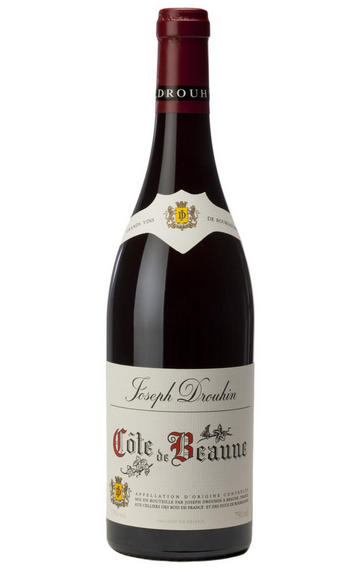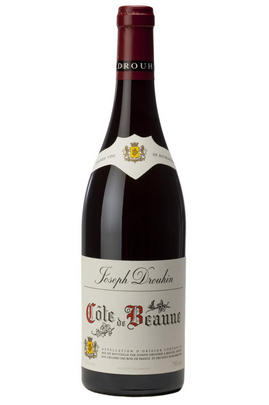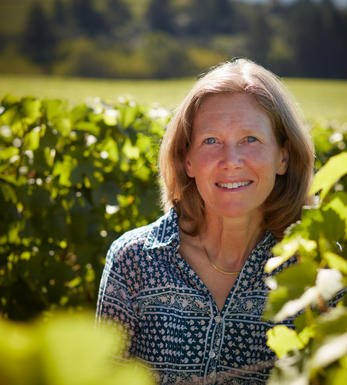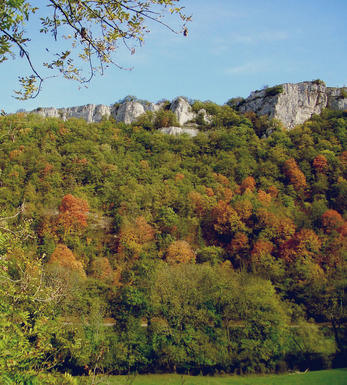
2016 Côte de Beaune, Joseph Drouhin, Burgundy

About this WINE

Maison Joseph Drouhin
Located in Burgundy, France, Maison Joseph Drouhin is one of the region’s most renowned and historic wineries and has a legacy dating back to 1880 when it was founded in the town of Beaune by Joseph Drouhin.
The winery is managed by the fourth generation of the Drouhin family, who are known for their commitment to quality and tradition. The vineyards are in some of Burgundy’s most prestigious appellations, including Côte de Nuits, Côte de Beaune, Chablis, and Côte Chalonnaise.
Maison Joseph Drouhin produces many red, white, and rosé wines but is mainly known for its exceptional Pinot Noir and Chardonnay. Some of their most renowned wines include Clos des Mouches, Chambertin-Clos de Bèze, Musigny, Beaune Clos des Ursules, and Chassagne-Montrachet Marquis de Laguiche.

Côte de Beaune
With its three musketeers of Chassagne-Montrachet, Puligny-Montrachet and Meursault, alongside the imperial Corton-Charlemagne, the Côte de Beaune is home to the finest Chardonnays in the world. It hosts seven of Burgundy's eight white Grands Crus, along with a single red Grand Cru. Ironically though, much more red wine is made in this southern half of the Côte d'Or than white.
Stretching 30km south past the town of Beaune to Cheilly-lès-Maranges, the Côte de Beaune has a more expansive feel and gentler slopes than the Côte de Nuits. Its finest Chardonnays are characterised by an incomparable intensity and complexity, while its Pinot Noirs generally have softness and finesse as their calling cards. The best reds come from Beaune, Pommard and Volnay, and the powerful Grand Cru of Corton.
As in the Côte de Nuits, the fragmentation of the Côte de Beaune's vineyards brings the single biggest hurdle for any wine lover, namely the unpredictability of its wine. The human factor is paramount, and sadly too many lazy or unscrupulous growers and merchants have produced disappointing wines from some of the region's greatest names, while their more talented and quality-minded neighbours craft exquisite examples from the same terroir. Happily, quality is now higher than it has ever been here and organic and biodynamic methods are increasingly popular – especially amongst the younger generation.
Wines labeled `Beaune' come from the appellation adjoining the town while those labeled Côte de Beaune (red or white) emanate from a group of vineyards on the hill above. Côte de Beaune Villages is a red wine that can be made from a number of lesser, named villages in the region, while Hautes-Côtes de Beaune (mostly red) is produced from vineyards in the hills to the west of the appellation, divided in two by St Romain. These tend to be light yet often fine wines, especially in hot years like 2003 and 2005.

Pinot Noir
Pinot Noir is probably the most frustrating, and at times infuriating, wine grape in the world. However when it is successful, it can produce some of the most sublime wines known to man. This thin-skinned grape which grows in small, tight bunches performs well on well-drained, deepish limestone based subsoils as are found on Burgundy's Côte d'Or.
Pinot Noir is more susceptible than other varieties to over cropping - concentration and varietal character disappear rapidly if yields are excessive and yields as little as 25hl/ha are the norm for some climats of the Côte d`Or.
Because of the thinness of the skins, Pinot Noir wines are lighter in colour, body and tannins. However the best wines have grip, complexity and an intensity of fruit seldom found in wine from other grapes. Young Pinot Noir can smell almost sweet, redolent with freshly crushed raspberries, cherries and redcurrants. When mature, the best wines develop a sensuous, silky mouth feel with the fruit flavours deepening and gamey "sous-bois" nuances emerging.
The best examples are still found in Burgundy, although Pinot Noir`s key role in Champagne should not be forgotten. It is grown throughout the world with notable success in the Carneros and Russian River Valley districts of California, and the Martinborough and Central Otago regions of New Zealand.


Buying options
Add to wishlist
Description
A proportion of this cuvée comes from the younger vines of Premier Cru vineyards, while the rest is from vines at the top of the hill, half-circled by woodland. The nose is ripe and inviting, with a hint of blue fruit. There’s satisfying spice and grip to the palate, which is racé yet round following 13 months in barrel (10 percent new). Drink 2019-2025.
Adam Bruntlett, Burgundy Buyer
Originally from the Yonne department, Joseph Drouhin founded the négociant company which bears his name in 1880. His son Maurice took over in 1918, buying the first vineyards including the famous Beaune Clos des Mouches. His successor Robert Drouhin has now passed on management to his children Frédéric (managing director), Laurent (export markets), Philippe (vineyards) and Véronique (oenology). Philippe manages the vineyards biodynamically while Véronique is supported by oenologist Jérome Faure-Brac and chef de cave Mélanie Sire. Véronique Drouhin is happy with the quality of the vintage, and philosophical about its quantity. She points out that a number of village-level wines have been enhanced by the addition of grapes from Premier Cru vineyards too badly frosted to justify their own cuvée. Where the frost was marginally less severe, the team at Drouhin used a tiny tank press – bought in response to the small crop in 2013 – to make what Véronique describes as “micro- cuvées”. Harvest began here on September 23rd, with meticulous sorting to separate the ripe (first generation) grapes from those which grew after the frost. Virtually all the grapes were de-stemmed, and pigeage preferred to pumping-over in a bid emphasise the fresh, fruity character of the vintage.
wine at a glance
Delivery and quality guarantee